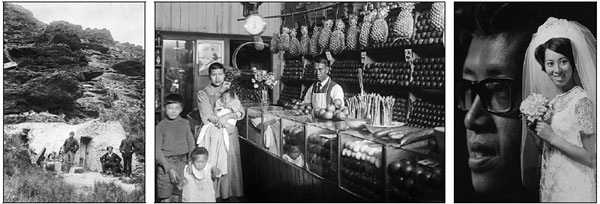Portraits of perseverance
Updated: 2016-10-25 07:41
By Wang Kaihao(China Daily USA)
|
||||||||
A display of more than 100 photographs shows the lives of Chinese migrants in New Zealand more than a century ago, reports Wang Kaihao.
When describing the history of early Chinese migrants overseas in the 19th century, "blood and tears" are commonly used words in China's textbooks; many endured miserable lives as laborers and faced discrimination from locals.
But, Phoebe Li, a Chinese New Zealander sociologist, who is curating a photo exhibition in Beijing about Chinese migrants' 170-year history in her country, wants visitors to see the story through a different prism.
On Friday, Recollection of A Distant Shore: A Photographic Introduction to the History of the Chinese in New Zealand, opened at the Overseas Chinese History Museum of China. It runs through Jan 21.
|
From left: Photos portray Chinese goldminers by Alexander Don; a Chinese family running a green grocery in the 1920s by an unknown photographer and a newly wed Chinese couple in 1975 by Ronald D Wolf at a Beijing exhibition focusing on the history of Chinese migrants in New Zealand. |
"Discrimination was inevitable at that time. It was just like what was faced by first-generation Chinese migrating to the United States, Canada and Australia," says Li. "But, the Chinese overseas faced the difficulties, made an effort to integrate, and joined mainstream society.
"So, we'd do well to adopt a more positive attitude when reviewing the past and cherish their perseverance," she says.
Li, who has been studying the Chinese community in New Zealand since 2002, is now based at Tsinghua University's Center of Chinese Entrepreneur Studies in Beijing.
According to Li, the 100-odd photos on display were selected from nearly 100,000 offerings provided by 16 public institutions in New Zealand, including Archives New Zealand, the National Library of New Zealand and Auckland Libraries, besides private collections.
They cover a wide spectrum, from the mid-19th century onwards.
Li says that typical news photos were culled out in favor of images reflecting people's daily lives, and renowned individuals are highlighted in the exhibition.
Appo Hocton, whose name was spelled in Mandarin pinyin as Huang Heting, was a former sailor who worked on a British ship.
He settled in Nelson, New Zealand in 1842, and became the first recorded Chinese migrant to that country.
Large groups of Chinese from southern Guangdong province followed in the 1860s, prompted by a gold rush in the Otago region.
"After the gold rush faded, the green grocery became a common business for Chinese migrants," says Li. "These groceries not only sold vegetables and fruit, but also functioned as job agencies and banks, which helped people remit money to China."
Some Chinese tycoons were nurturing when it came to Chinese migrants. For instance, Choie Sew Hoy in Dunedin, a principal city in Otago, first offered immigration information and sold instruments to gold miners, and gradually established a business empire.
His family, now in its sixth generation in New Zealand, still plays an important role today.
Chew Chong, another Chinese entrepreneur featured in the exhibited photos, became the first businessman in New Zealand to use refrigeration technology to export cream. He is often referred to as the founding father of the country's dairy industry.
Strict restrictions on Chinese migrants came into play in 1881, followed by a series of discriminatory laws in the subsequent decades.
"Then, a Chinese migrant was required to pay tax, which roughly equaled two-year's average income of New Zealanders at that time, to stay in the country," says Li.
But, when many Chinese joined the New Zealand military during World War II to fight Japan, they won a great reputation for the whole community, and the restrictions were lifted. One result, the curator says, was that "many photographers began to then take pictures of ordinary Chinese".
Chinese entrepreneurs continued to be pathfinders during that time.
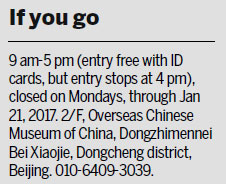
For instance, the first supermarket in New Zealand was opened in the 1970s by a Chinese merchant.
Meanwhile, John McKinnon, New Zealand's ambassador to China, would like to take the panoramic exhibition to his country.
"The exhibition has a huge variety of sources, and it's perhaps the first time where the history of the Chinese in New Zealand can be seen from the beginning," he says.
"I grew up in Wellington," McKinnon says. "And when I went to a Chinese restaurant there many years ago, all Chinese people working there were from Guangdong.
"But now I find some are from Harbin (in northeastern Heilongjiang province) and some are from Chengdu (in southwestern Sichuan province), and only a few come from Guangdong."
New Zealand government statistics show there are about 170,000 Chinese in the country, but only one-quarter of them were native born, while the rest are "new immigrants" from China and elsewhere in the world.
"It (the scenario) changes, but they are people with skills and ambitions," says McKinnon.
In 2002, Helen Clark, New Zealand's prime minister at that time, officially apologized to the Chinese for the restrictive laws of the past, which Huang Jikai, the director of the Overseas Chinese History Museum of China, sees as a milestone, showing an improvement in the social status of the Chinese there.
"The Chinese (in New Zealand) not only know the local economy, politics and customs well, but also carry their own traditions," says Huang. "They thus function as an important pillar in improving bilateral communications today."
"So, it is crucial to study the history of the overseas Chinese if we want to figure out the recent history of China," says Wang Jianlang, the head of the history research institute at the Chinese Academy of Social Sciences.
Wang notes that an expert panel studying Chinese migrant history in New Zealand was established in his academy in 2014. "No matter what motive they had to go to New Zealand in the first place, or which job they took, they have today become ambassadors for cross-cultural communication."
Contact the writer at wangkaihao@chinadaily.com.cn
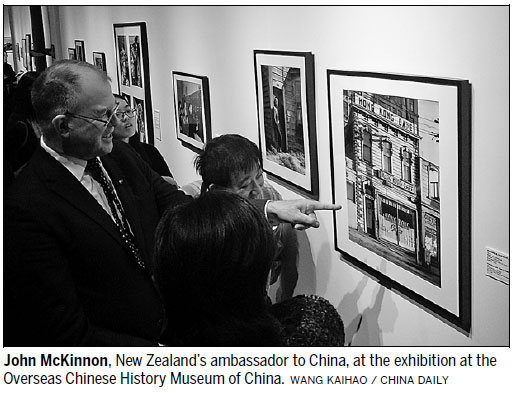
(China Daily USA 10/25/2016 page10)
- World's first multiple-span cable-stayed bridge to open in Hunan
- Accompanying satellite sends back images of Tiangong II, Shenzhou XI
- China prefab house explosion kills 14, wounds 147
- 88 years old becomes oldest undergraduate in China
- Long March a 'stately monument': Xi
- Ten photos from around China: Oct 14-20
- Lavrov, Kerry discuss Syrian situation
- Turkish troops kill 17 IS militants since Mosul operation: FM
- 59 killed in attack on police academy in Pakistan
- Syrian forces capture new area in Aleppo
- Fate of child migrants uncertain before France demolishes Jungle camp
- Former Japan SDF official believed to have blown himself up, injures 3

 Top 5 property destinations for Chinese investors
Top 5 property destinations for Chinese investors
 Accompanying satellite sends back images of Tiangong II, Shenzhou XI
Accompanying satellite sends back images of Tiangong II, Shenzhou XI
 Dare you jump
Dare you jump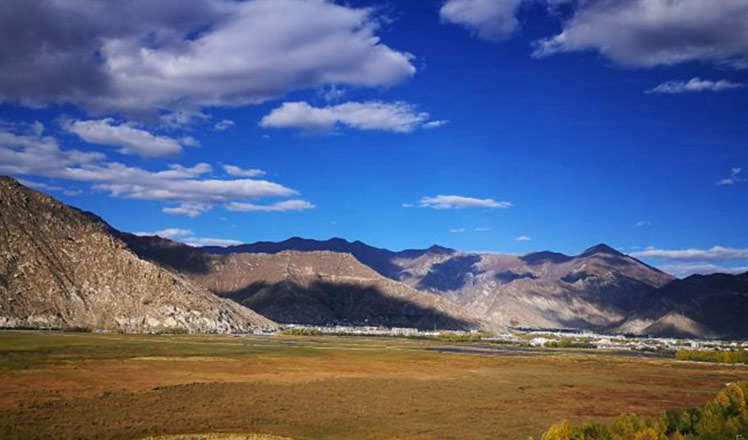
 Through the lens: Under the blue sky of Tibet
Through the lens: Under the blue sky of Tibet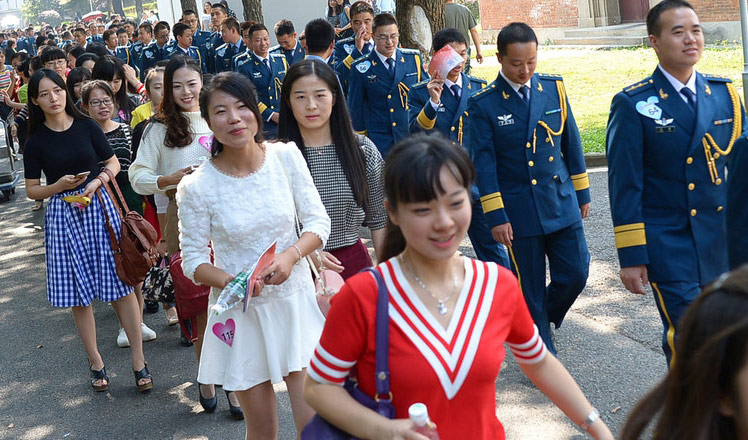
 Military blind date attracts hundreds young women
Military blind date attracts hundreds young women
 Britain's Red Arrows arrive at Zhuhai for China air show
Britain's Red Arrows arrive at Zhuhai for China air show
 Villagers build ladder on cliff with 1,500 steel pipes
Villagers build ladder on cliff with 1,500 steel pipes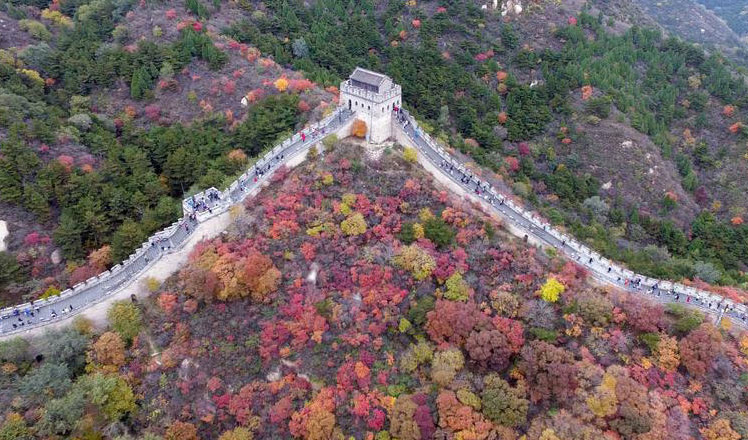
 Colorful leaves adorn Great Wall in Beijing
Colorful leaves adorn Great Wall in Beijing
Most Viewed
Editor's Picks

|

|

|

|

|

|
Today's Top News
'Zero Hunger Run' held in Rome
Trump outlines anti-terror plan, proposing extreme vetting for immigrants
Phelps puts spotlight on cupping
US launches airstrikes against IS targets in Libya's Sirte
Ministry slams US-Korean THAAD deployment
Two police officers shot at protest in Dallas
Abe's blame game reveals his policies failing to get results
Ending wildlife trafficking must be policy priority in Asia
US Weekly

|

|
